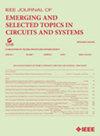Stealthy Backdoor Attack Against Federated Learning Through Frequency Domain by Backdoor Neuron Constraint and Model Camouflage
IF 3.8
2区 工程技术
Q2 ENGINEERING, ELECTRICAL & ELECTRONIC
IEEE Journal on Emerging and Selected Topics in Circuits and Systems
Pub Date : 2024-08-27
DOI:10.1109/JETCAS.2024.3450527
引用次数: 0
Abstract
Federated Learning (FL) is a beneficial decentralized learning approach for preserving the privacy of local datasets of distributed agents. However, the distributed property of FL and untrustworthy data introducing the vulnerability to backdoor attacks. In this attack scenario, an adversary manipulates its local data with a specific trigger and trains a malicious local model to implant the backdoor. During inference, the global model would misbehave for any input with the trigger to the attacker-chosen prediction. Most existing backdoor attacks against FL focus on bypassing defense mechanisms, without considering the inspection of model parameters on the server. These attacks are susceptible to detection through dynamic clustering based on model parameter similarity. Besides, current methods provide limited imperceptibility of their trigger in the spatial domain. To address these limitations, we propose a stealthy backdoor attack called “Chironex” against FL with an imperceptible trigger in frequency space to deliver attack effectiveness, stealthiness and robustness against various countermeasures on FL. We first design a frequency trigger function to generate an imperceptible frequency trigger to evade human inspection. Then we fully exploit the attacker’s advantage to enhance attack robustness by estimating benign updates and analyzing the impact of the backdoor on model parameters through a task-sensitive neuron searcher. It disguises malicious updates as benign ones by reducing the impact of backdoor neurons that greatly contribute to the backdoor task based on activation value, and encouraging them to update towards benign model parameters trained by the attacker. We conduct extensive experiments on various image classifiers with real-world datasets to provide empirical evidence that Chironex can evade the most recent robust FL aggregation algorithms, and further achieve a distinctly higher attack success rate than existing attacks, without undermining the utility of the global model.利用后门神经元约束和模型伪装,通过频域对联合学习进行隐形后门攻击
联邦学习(FL)是一种有益的分散学习方法,用于保护分布式代理的本地数据集的隐私性。然而,FL的分布式特性和不可信数据引入了后门攻击的漏洞。在此攻击场景中,攻击者使用特定触发器操纵其本地数据,并训练恶意本地模型来植入后门。在推理过程中,全局模型会对任何带有攻击者选择的预测触发器的输入产生错误行为。大多数针对FL的后门攻击都侧重于绕过防御机制,而没有考虑对服务器上的模型参数进行检查。基于模型参数相似度的动态聚类容易检测到这些攻击。此外,目前的方法提供了有限的不可感知的触发空间域。为了解决这些限制,我们提出了一种名为“Chironex”的针对FL的隐形后门攻击,该攻击在频率空间中具有不可察觉的触发,以提供针对FL的各种对策的攻击有效性,隐潜性和鲁棒性。我们首先设计了一个频率触发函数来生成不可察觉的频率触发以逃避人类检查。然后通过任务敏感神经元搜索器估计良性更新和分析后门对模型参数的影响,充分利用攻击者的优势增强攻击的鲁棒性。它通过减少基于激活值对后门任务贡献巨大的后门神经元的影响,并鼓励它们向攻击者训练的良性模型参数更新,将恶意更新伪装成良性更新。我们用真实世界的数据集对各种图像分类器进行了广泛的实验,以提供经验证据,证明Chironex可以逃避最新的鲁棒FL聚合算法,并进一步实现比现有攻击明显更高的攻击成功率,而不会破坏全局模型的效用。
本文章由计算机程序翻译,如有差异,请以英文原文为准。
求助全文
约1分钟内获得全文
求助全文
来源期刊

IEEE Journal on Emerging and Selected Topics in Circuits and Systems
ENGINEERING, ELECTRICAL & ELECTRONIC-
CiteScore
8.50
自引率
2.20%
发文量
86
期刊介绍:
The IEEE Journal on Emerging and Selected Topics in Circuits and Systems is published quarterly and solicits, with particular emphasis on emerging areas, special issues on topics that cover the entire scope of the IEEE Circuits and Systems (CAS) Society, namely the theory, analysis, design, tools, and implementation of circuits and systems, spanning their theoretical foundations, applications, and architectures for signal and information processing.
 求助内容:
求助内容: 应助结果提醒方式:
应助结果提醒方式:


